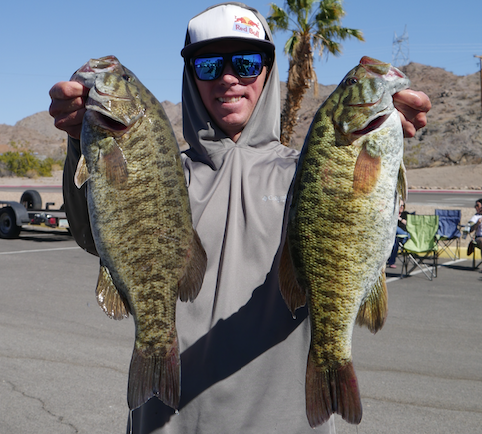BY MIKE STEVENS
Smallmouth bass are a hell of a fish. I’m not a big freshwater bass guy, but at the same time, doing some legit smallmouth bass fishing was on my bucket list. Since I married into a Michigan family and had an excuse to go up there every now and again, I figured I’d make my debut and check that box in what’s arguably the smallmouth capital of the galaxy, Lake St. Clair.
In a word: wow.
Last month, the National Park Service (NPS) announced launching a removal effort to remove smallmouth bass and green sunfish from the Colorado River Slough below Glen Canyon Dam in Glen Canyon National Recreation Area in order to protect the native humpback chub, which is listed as threatened under the endangered species act. Smallmouth have been discovered breeding in areas where they have never been found in significant numbers, and their presence in the new area puts them in position to put a hurt on the humpbacks.
The treatment consists of deploying a plant-based, EPA-approved fish piscicide rotenone (Prenfish) in a targeted area, specifically, the “cobble bar area surrounding the backwater slough at rivermile-12 where the invasive fish were found, the slough itself, and a short distance up and downstream” according to an NPS press release. The release also stated “The treatment will be carefully planned and conducted to minimize exposure to rotenone and protect the health and safety of humans, the environment, desirable fish species, and livestock. Prior to the treatment, tests will be conducted to determine the minimum effective concentration of rotenone for use during the treatment. Rotenone is a natural substance derived from plant roots. It has been effective at eliminating localized populations of smallmouth bass, including in the Colorado River Basin. An impermeable fabric barrier will be installed at the mouth of the slough for the duration of the treatments to minimize the exchange of water with the river. Potassium permanganate, a chemical used to purify drinking water, will be added to the slough, and into the river just above the fabric barrier to neutralize the rotenone. Should any rotenone enter the main channel, it will immediately be diluted to concentrations that are insignificant to wildlife or humans.”
The knee-jerk reaction to this from the angling community was raw, unadulterated fury like it always is, but I’m thinking it’s not as devastating as the social media community likes to react like it is.
From what I have read, it’s the river equivalent to spot treating termites, and it has about the same rate of long-term effectiveness. Most of the concerns over this is from anglers who fish smallmouth in the Colorado River lakes significantly downstream of all this such as lakes Havasu and Mohave.
The thing is, the smallmouth in those bodies of water spawn in those bodies of water. It’s not like they’re salmon swimming upstream to their original spawning grounds to get busy, and those fish are coming back down to repopulate the lakes. Short version: there are always going to be smallmouth in those lakes, and the river, and beyond. If they were considered so destructive throughout the Colorado River chain, the first move would be doing the striped bass thing with them and blowing up the limits.
The other thing is, when it comes to native species of anything, the non-native stuff is never going to get the nod regardless of how much we like to fish (or hunt) for them. That’s not the say non-native fish or game can’t coexist with the native guys –generally speaking— because that can and is going on all over the place, above and below water. It’s just managed in various ways, including regulated hunting and fishing which has long been a legitimate wildlife management tool.
In this case, it’s a sensitive spawning area for a native fish where predatory non-native fish are being found in increasing numbers, and that is what’s being dealt with in this specific zone below Glen Canyon Dam.
In the same general area in 2020, anglers were offered a reward of at least $25 per brown trout removed from the Colorado River between Glen Canyon Dam and the mouth of the Paria River. This after the National Park Service completed another plan for non-native fish management in 2019. This was also to protect several other native fish species including the humpback chub.
So, maybe step back, take a deep breath and slow your roll a bit. There’s going to be plenty of bronzebacks for you to chase in the Colorado River system.




